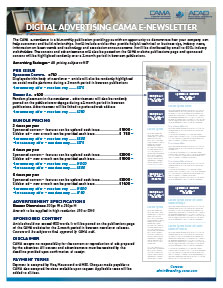Should you keep some COVID controls in place?
As the province lifts pandemic restrictions for public places, what are the workplace implications? Should your workplace lift its restrictions in line with the province?
"Not necessarily," says Workplace Safety & Prevention Services (WSPS) Consultant Pamela Patry. "It's not about throwing out the controls and processes you've put into place. It’s about merging them into a sustainable system." This way you have the flexibility to either ramp up again if COVID-19 case numbers increase and guidelines are reinstated or loosen restrictions further when Public Health gives the green light.
Loosening workplace restrictions requires thought and careful management, says Pamela. Before you decide what controls to lift, monitor changing requirements, consider your COVID-19 risks, how comfortable employees and customers will be with changes, whether pandemic controls offer other benefits to your workplace, and how you will communicate the changes.
Pamela offers more on these considerations.
1. Stay on top of changing requirements, both province-wide and from your local public health unit. Still have questions? Call the province’s COVID-19 business information line.
2. Assess risks. While case numbers and hospitalizations are down and public restrictions are lifting, the risk of contracting COVID-19 has not disappeared. "COVID-19 isn't going away, and there could be new strains on the horizon," notes Pamela.
Before lifting workplace controls, update your existing COVID-19 risk assessment, or conduct a new assessment. For example, loosening controls or bringing teleworkers back into the workplace may be problematic if employee vaccination rates are low, or your workplace is located in an area where cases counts are still high.
"It's okay for your workplace requirements to be stricter than what’s required by Public Health," notes Pamela. "Remember, you have a legal obligation to do everything possible to protect the health and safety of your workers."
3. Anticipate worker/customer response. How will people react to fewer restrictions? "It will likely be very mixed," says Pamela. Some employees and customers will happily abandon physical distancing, mask wearing and working at home; others will want to continue to take these precautions, including vulnerable workers with compromised immune systems or medical conditions that put them at greater risk.
Finding the right comfort level for everyone means remaining flexible. For example, if some employees are hesitant about re-entering the workplace, could they continue working from home? if you are planning an in-person meeting, could hesitant staff attend virtually? Likewise, could employees continue to wear masks if they want to? What measures could you retain or introduce to protect vulnerable workers?
4. Weigh other benefits. Some COVID-19 controls are keepers for reasons other than reducing the risk of transmission, says Pamela. Mask wearing, physical distancing, sanitizing, and staying at home when sick are effective ways to prevent colds, flu, and other infectious diseases. If you eliminate these controls now, should you reinstate them during flu and cold season? Could you change your workplace culture and practices to encourage staying home when sick?
Other examples of possible side benefits include maintaining
• hybrid models of work where they increase productivity and efficiency
• Plexiglas guards in retail settings, which may reduce the risk of violence and harassment
• higher rates of ventilation. Bringing more fresh air into the workplace can help reduce fatigue and increases alertness. For more on this, read We're all exhausted. Here's what workplaces can do about it.
5. Communicate the changes. "Once you've decided which controls to keep or relax, have honest and clear communication with your staff about what you're doing and why," advises Pamela. Include these messages:
• the workplace is continuing to follow instructions and guidance from public health
• your policies are consistent with the risks you've identified in your workplace, and may exceed public health guidelines in order to keep employees safe
• the changes you are making are flexible and take into consideration the comfort levels of all employees
• you expect staff be considerate, respectful and empathetic to the choices of other employees, such as continuing to wear masks after this requirement is lifted, or working from home
• policies may be adjusted or reinstated, according to public health guidelines.
Free Resources
Check out these free online resources:
• Managing Changing COVID-19 Requirements (resource guide)
• Conducting a COVID-19 risk assessment before bringing employees back (article)
• COVID-19 Workplace Risk Assessment and Safety Plan (20-minute eCourse)
• Return to Work During COVID-19 (30-minute eCourse)
• Return to Work During COVID-19: Preparing Workers (30-minute eCourse)
• Pandemic Planning: Reopening for Business (30-minute eCourse)
The information in this article is accurate as of its publication date.
Have health and safety questions? Please contact Denise Lam, WSPS Account Manager, Small Business at Denise.Lam@wsps.ca.
About Workplace Safety & Prevention Services (WSPS)
Workplace Safety & Prevention Services (WSPS) is a not-for-profit organization committed to protecting Ontario workers and businesses. A proud partner in Ontario’s occupational health and safety system and a trusted safety advisor since 1917, WSPS has a rich history of making Ontario workplaces safer. WSPS serves the manufacturing, agricultural and service sectors. WSPS offers unparalleled health and safety expertise, consulting, training and resources for businesses of any size. For more information visit WSPS.ca.
Copyright information
This article was prepared by Workplace Safety & Prevention Services (WSPS). At WSPS we are committed to helping businesses understand their risks and legal obligations to stay in compliance and build safer workplaces. If you would like permission to republish or use information in this article, please contact Jessica Bowes, Content Development Lead at jessica.bowes@wsps.ca.


%202023.png)


